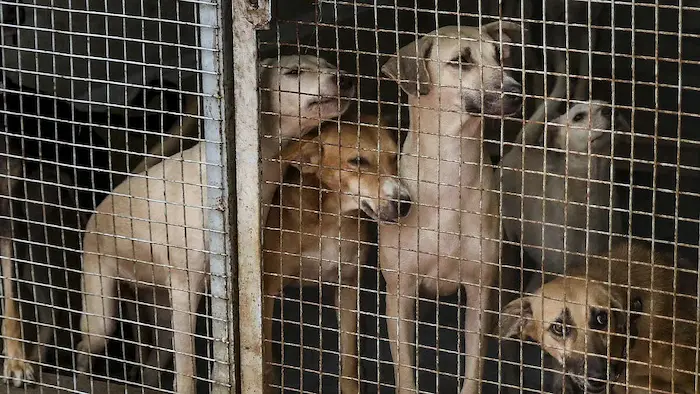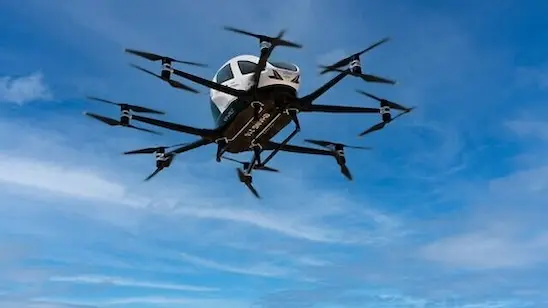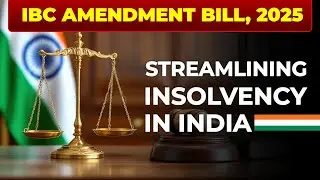1. Expansion of SC/ST Scholarships – Polity

Why in the News?
The Central Government is considering increasing the parental income limit for SC/ST scholarships from FY 2026–27, following a decline in the number of beneficiaries. This move aims to broaden access and make the schemes more inclusive.
Key Highlights
- The government plans to revise eligibility criteria for SC/ST and OBC/DNT scholarships.
- A major proposal includes raising the annual parental income ceiling to improve accessibility.
- The number of beneficiaries has declined significantly in recent years, prompting policy review.
About SC/ST Scholarships
These are centrally sponsored schemes, funded jointly by the Union and State Governments:
- 60:40 sharing ratio (except 90:10 for NE states).
- Aim: To provide financial support for students from socially and economically marginalized communities.
Types of Scholarships:
- Pre-Matric Scholarships:
- For Classes IX–X (SC students eligible from I–X if parents are in hazardous occupations).
- Post-Matric Scholarships:
- For studies beyond Class X.
Current Income Criteria:
- Rs. 2.5 lakh per annum (for both pre- and post-matric scholarships).
Proposed Revisions (To be implemented from FY 2026–27):
- ST Students: Proposal to increase the income limit to Rs. 4.5 lakh (pre & post-matric).
- SC, OBC, DNT Students: Similar discussions underway.
- OBC proposal: Double the income limit, expand pre-matric coverage from Class V onwards.
Budget Allocation (FY 2025–26):
- Social Justice Ministry: ₹13,611 crore
- 66.7% allocated to scholarships for SCs, OBCs, EBCs, DNTs.
- Tribal Affairs Ministry: ₹14,925.81 crore
- 18.6% for ST scholarships
Declining Beneficiary Trends (2020–2024):
| Category | Pre-Matric Drop | Post-Matric Drop |
|---|---|---|
| SCs | 30.63% | 4.22% |
| OBCs, EBCs, DNTs | From 58.62 lakh (2021–22) to 20.25 lakh (2023–24) | – |
Parliamentary Committee Recommendations:
- OBC Welfare Panel:
- Double income limit.
- Expand pre-matric coverage from Class V.
- Tribal Affairs Committee:
- Urged revision in income limits to reach lower-middle-income families.
Socio-Economic Significance:
- Enhances educational accessibility for marginalized and lower-middle-income families.
- Reduces dropout rates, especially in secondary and higher education.
- Promotes social equity and prepares marginalized youth for competitive careers.
- Aligns with inclusive development goals and constitutional mandates (Articles 15, 46).
Exam Connect – Possible Questions
Prelims
1. Consider the following statements regarding the SC/ST scholarship schemes in India:
1. Pre-matric scholarships are provided only to SC and ST students studying in Classes IX and X.
2. The central government fully funds these scholarships across all states.
Which of the above statements is/are correct?
A. 1 only
B. 2 only
C. Both 1 and 2
D. Neither 1 nor 2
Answer: D. Neither 1 nor 2
Explanation: Pre-matric scholarships are provided from Class I to X for SC students (with conditions). Funding is shared between Centre and States (60:40 or 90:10 for NE).
2. As per the recent proposal, what is the revised parental income limit being considered for ST scholarships (pre- and post-matric)?A. Rs. 2.5 lakh
B. Rs. 3.5 lakh
C. Rs. 4.5 lakh
D. Rs. 5.0 lakh
Answer: C. Rs. 4.5 lakh
Mains
1. The declining trend in SC/ST scholarship beneficiaries points to structural barriers in access to education. Discuss the policy and administrative measures needed to make education schemes more inclusive and sustainable. (150–200 words)
2. Raising the income ceiling for SC/ST scholarships is a step towards social equity. Analyze its potential impact on dropout rates, access to higher education, and empowerment of marginalized communities. (150–250 words)
2. Returning Sterilised Dogs: The Cornerstone of ABC Programme Success – Polity

Why in News?
The Supreme Court of India recently criticised the practice of returning sterilised stray dogs to their original locations under the Animal Birth Control (ABC) Programme, calling it “unreasonable and absurd.”
This sparked a debate among citizens, animal welfare experts, and policy makers. While the court’s concern is based on rising cases of stray dog attacks, experts argue that returning sterilised dogs is crucial for controlling stray populations effectively and humanely.
Understanding the ABC Programme
The Animal Birth Control (Dogs) Rules, under the Prevention of Cruelty to Animals Act, 1960, aim to:
- Control stray dog populations through sterilisation and vaccination.
- Prevent rabies through mass vaccination.
- Return sterilised dogs to their original location.
Why Return Sterilised Dogs?
- Territorial Behavior: Dogs are territorial. Sterilised dogs prevent new, unsterilised dogs from entering the area.
- Population Control: Over time, this leads to a natural decline in stray numbers.
- Social Stability: Removing dogs entirely causes vacuum, leading to territorial fights and migration of new dogs.
Concerns Raised by Supreme Court
- Termed the return of sterilised dogs “absurd,” especially in light of aggressive dog attacks.
- Directed authorities (esp. in Delhi) to shelter 5,000–6,000 stray dogs.
Challenges in Implementation
- Crisis of Capacity
- Delhi lacks sufficient infrastructure and shelters for mass housing of stray dogs.
- Sheltering is resource-intensive and potentially inhumane if not maintained well.
- Irresponsible Pet Ownership
- Lack of mandatory registration and sterilisation of pet dogs.
- Many owners abandon pets, directly contributing to the stray population.
- Feeding Stray Dogs
- Feeding strays in public areas can lead to increased aggression and territoriality.
- Without sterilisation, it may incentivize breeding and group aggression.
Way Forward / Recommendations
- Strengthen ABC infrastructure at the municipal level.
- Ensure mandatory registration and sterilisation of pet dogs.
- Implement community awareness programmes on responsible pet ownership.
- Promote humane and scientific population control methods over mass sheltering.
- Create localized rules for feeding strays in safe, monitored zones.
Key Concepts
| Term | Explanation |
|---|---|
| ABC Programme | A national scheme for sterilisation and vaccination of stray dogs to manage their population humanely. |
| Territorial Behaviour | Dogs naturally guard and occupy their area. Sterilised dogs deter others from moving in. |
| Prevention of Cruelty to Animals Act, 1960 | The legal basis for animal welfare rules, including the ABC Programme. |
| Vacuum Effect | Removing all dogs from an area causes new, possibly aggressive and unsterilised dogs to migrate in. |
Exam Connect – Possible Questions
Prelims
- Which of the following is NOT a feature of the Animal Birth Control (ABC) Programme?
A. Sterilisation of stray dogs
B. Vaccination against rabies
C. Euthanising all stray dogs
D. Returning sterilised dogs to their original location
Answer: C. Euthanising all stray dogs - The Animal Birth Control Programme is implemented under which legislation?
A. Environment Protection Act, 1986
B. Wildlife Protection Act, 1972
C. Prevention of Cruelty to Animals Act, 1960
D. National Green Tribunal Act, 2010
Answer: C. Prevention of Cruelty to Animals Act, 1960
Mains
- Discuss the significance of the Animal Birth Control (ABC) Programme in the context of urban governance and public safety. What challenges does its implementation face in metropolitan cities like Delhi?
- Critically examine the Supreme Court’s stand on sheltering stray dogs vis-à-vis the scientific and humane principles of the ABC Programme. How can a balanced approach be developed?
- Analyze the role of irresponsible pet ownership in worsening the stray dog crisis in Indian cities. What policy interventions can address this issue effectively?
3. India’s Drone Diplomacy: Seizing the Indo-Pacific Advantage – Defence & Security

Why in News?
The rise of drones as decisive tools in modern warfare—especially after the 2020 Nagorno-Karabakh conflict—has reshaped global defence strategies.
India, recognizing this shift, is modernizing its UAV (Unmanned Aerial Vehicle) fleet and pursuing defence diplomacy in the Indo-Pacific, amid growing demand and diminishing U.S. dominance in drone exports.
What Are UAVs and UCAVs?
- UAVs (Unmanned Aerial Vehicles): Aircraft without a human pilot, used primarily for surveillance and reconnaissance.
- UCAVs (Unmanned Combat Aerial Vehicles): Armed drones capable of precision strikes in conflict zones.
Recent Developments & Trends
1. Modernisation of India’s Drone Capabilities
- India acquired 31 MQ-9B Reaper drones from the U.S. in 2024.
- Includes SkyGuardian (land) and SeaGuardian (maritime).
- Enhances maritime surveillance and strategic deterrence, particularly in the Indian Ocean Region (IOR).
- However, these address only a portion of India’s border security challenges with Pakistan and China.
2. Shifting Procurement Strategy
- India is moving away from full drone imports toward:
- Importing advanced components (e.g., American engines, payloads).
- Joint ventures with countries like Israel and select European partners.
- Boosting domestic production (e.g., DRDO’s Rustom, TAPAS drones).
3. Drone Diplomacy in the Indo-Pacific
- Countries like Vietnam, Philippines, and Indonesia seek to enhance Maritime Domain Awareness (MDA) to counter China’s assertiveness.
- India can leverage this need by:
- Offering customized UAV exports.
- Technology-sharing frameworks.
- Building strategic military alliances through defence trade.
4. Strategic Opening: Decline of U.S. Dominance
- As U.S. drone exports become limited due to policy restrictions and pricing, India has the opportunity to:
- Fill the void in the Indo-Pacific defence market.
- Promote ‘Make in India’ drones for regional security collaboration.
- Establish itself as a key drone supplier and regional power.
Geopolitical Implications
| Aspect | Significance |
|---|---|
| Border Security | Enhances surveillance and tactical advantage along the LOC and LAC. |
| Maritime Surveillance | Crucial for Indian Ocean security and anti-piracy ops. |
| Diplomatic Leverage | Defense exports and cooperation strengthen India’s ties with ASEAN, Quad, and IOR countries. |
| Countering China | Strategic partnerships help deter China’s influence in the Indo-Pacific. |
Challenges to Drone Diplomacy
- High R&D costs and limited indigenous tech.
- Export control regimes like MTCR (Missile Technology Control Regime).
- Need for stronger industrial ecosystem and defence-private sector collaboration.
Way Forward
- Fast-track indigenous UAV projects (like Rustom II, Archer-NG).
- Create export-ready drone variants tailored for regional needs.
- Strengthen partnerships with friendly nations through:
- Joint production (e.g., with Israel).
- Technology transfer agreements.
- Promote India’s role as a responsible and reliable defence partner.
Exam Connect – Possible Questions
Prelims
- What is the primary difference between a UAV and a UCAV?
A. UCAVs are for commercial use; UAVs are for military use
B. UAVs are manned aircraft; UCAVs are drones
C. UCAVs are armed and capable of combat missions, UAVs are mainly for surveillance
D. UAVs are only used by the U.S., while UCAVs are global
Answer: C. UCAVs are armed and capable of combat missions, UAVs are mainly for surveillance - Which of the following drones were recently acquired by India from the U.S.?
A. Predator A
B. SeaGuardian and SkyGuardian
C. Heron TP
D. Harop
Answer: B. SeaGuardian and SkyGuardian - Which of the following statements about India’s drone diplomacy is correct?
A. India exclusively imports drones for its defence forces
B. India exports drones mainly to Western countries
C. India is using drone exports as a strategic tool in the Indo-Pacific
D. India bans private sector participation in UAV development
Answer: C. India is using drone exports as a strategic tool in the Indo-Pacific
Mains
- Examine the evolving role of UAVs and UCAVs in modern warfare. How is India leveraging drone technology to enhance national security and regional diplomacy?
- Discuss India’s drone procurement strategy in light of its strategic needs and defence indigenisation goals. How can India balance imports and domestic production effectively?
- “Drone diplomacy is a strategic tool to counterbalance China in the Indo-Pacific.” Critically analyse this statement with reference to India’s foreign and defence policies.
4. IBC Amendment Bill 2025: Strengthening Insolvency Resolution in India – Polity

Why in News?
The Insolvency and Bankruptcy Code (Amendment) Bill, 2025 was introduced in the Lok Sabha by Finance Minister Nirmala Sitharaman.
It seeks to address persistent delays, inefficiencies, and procedural bottlenecks in India’s insolvency regime and aims to align India’s legal framework with global best practices.
Background: What is the IBC?
- The Insolvency and Bankruptcy Code (IBC), 2016 is India’s flagship legislation to resolve corporate distress and liquidation in a time-bound and creditor-friendly manner.
- It consolidated laws related to insolvency of companies, partnerships, and individuals.
- It introduced the Insolvency Resolution Process (IRP) through institutions like NCLT, Insolvency Professionals (IPs), and Information Utilities (IUs).
Key Features of the IBC Amendment Bill 2025
| Provision | Description |
|---|---|
| Faster Admission of Cases | Mandatory admission of cases by NCLT within 14 days if default and compliance are proven. |
| Out-of-Court Resolution | Introduces Creditor-Initiated Resolution Process (CIRP) with 51% creditor consent, allowing corporate management to stay in control. |
| Group Insolvency Framework | Enables joint resolution for companies within the same corporate group, reducing value loss and procedural duplication. |
| Cross-Border Insolvency | Aligns with UNCITRAL Model Law, allowing recognition of Indian insolvency proceedings abroad and vice versa. |
| Enhanced Liquidation Process | Empowers Committee of Creditors (CoC) to supervise liquidation and extends the moratorium into liquidation stage. |
| Broader Definition of Resolution Plans | Expands the scope to include varied restructuring methods, not just asset sales. |
| Restriction on Withdrawal of Applications | Limits withdrawal of insolvency applications beyond a certain stage to prevent misuse. |
| Anti-Fraud Measures | Introduces provisions to detect and prevent fraudulent or preferential transactions during insolvency. |
Why This Amendment Matters
- Tackles case backlog and delays at NCLT.
- Encourages early resolution through out-of-court methods.
- Enhances India’s Ease of Doing Business and investor confidence.
- Facilitates foreign investment by ensuring predictable cross-border procedures.
- Improves corporate debt recovery and economic stability.
Global Context: UNCITRAL Model Law
- India seeks to align with the United Nations Commission on International Trade Law (UNCITRAL) Model Law on Cross-Border Insolvency, adopted by over 50 countries.
- It provides legal cooperation, coordination, and recognition of foreign insolvency judgments—critical for multinational corporations and global investors.
Institutional Framework Involved
| Institution | Role |
|---|---|
| NCLT | Adjudicating authority for corporate insolvency. |
| CoC (Committee of Creditors) | Decision-making body in insolvency resolution. |
| Insolvency and Bankruptcy Board of India (IBBI) | Regulator overseeing professionals and processes. |
| Information Utilities (IUs) | Maintain verified records of debts and defaults. |
Challenges Still Ahead
- Capacity constraints and limited benches of NCLT.
- Need for trained insolvency professionals and specialised legal infrastructure.
- Resistance to group insolvency due to complex ownership structures.
- Ensuring compliance and implementation of out-of-court settlements.
Exam Connect – Possible Questions
Prelims
1. The Insolvency and Bankruptcy Code (Amendment) Bill, 2025 introduces which of the following provisions?
1. Group insolvency mechanism
2. Cross-border insolvency framework
3. Compulsory government acquisition of distressed companies
A. 1 and 2 only
B. 2 and 3 only
C. 1 and 3 only
D. All of the above
Answer: A. 1 and 2 only
1. Which of the following international models has influenced India’s Cross-Border Insolvency framework?
A. Bretton Woods Model
B. Basel III Framework
C. UNCITRAL Model Law
D. UNCTAD Model Convention
Answer: C. UNCITRAL Model Law
Mains
- Discuss the significance of the IBC Amendment Bill 2025 in addressing delays in India’s insolvency resolution process. How does it align with global best practices?
- Critically examine the challenges associated with implementing group and cross-border insolvency frameworks in India.
- How will the IBC Amendment 2025 affect India’s business environment and investor confidence? Highlight the role of out-of-court resolution mechanisms in this context.
5. Animal Birth Control (ABC) Programme: Legal, Ethical & Administrative Dimensions – Governance

Why in News?
The Supreme Court recently labelled the practice of returning sterilised stray dogs to the streets under the Animal Birth Control (ABC) Programme as “unreasonable and absurd.”
It recommended their relocation to animal shelters instead, igniting a debate between animal welfare obligations, public health concerns, and municipal capabilities.
What is the Animal Birth Control (ABC) Programme?
A humane, science-based public health initiative aimed at:
- Controlling stray dog populations sustainably.
- Reducing rabies through mass sterilisation and vaccination.
It operates under a “Catch–Sterilise–Vaccinate–Release” model, avoiding both mass killing and relocation of dogs.
Legal Framework
| Rule / Act | Key Provisions |
|---|---|
| Animal Birth Control (Dogs) Rules, 2001 | Original rules governing the ABC programme. |
| Animal Birth Control Rules, 2023 | Updated to ensure better monitoring, implementation, and infrastructure standards. |
| Prevention of Cruelty to Animals (PCA) Act, 1960 | Prohibits mass culling or relocation of stray dogs. |
Implementation Structure
- Managed by: Urban local bodies (municipalities, municipal corporations, panchayats).
- Executed by: Only AWBI-authorised organisations.
- Monitored by: State-level and district-level committees for compliance and complaint redressal.
Key Features of ABC Rules, 2023
| Feature | Details |
|---|---|
| Sterilisation Target | Minimum 70% of stray dogs within one reproductive cycle (~6 months). |
| Gender Focus | 70:30 ratio of female-to-male sterilisation. |
| Vaccination | Mandatory rabies vaccination (ABC-ARV) alongside sterilisation. |
| Infrastructure | Required: Kennels, surgical units, veterinary staff, hygienic shelters. |
| Data & Transparency | Mandatory recordkeeping of every dog from capture to release. |
| Monitoring | Regular review and public grievance redressal mechanisms at local/state levels. |
Supreme Court’s Concern
- Questioned the public safety of releasing sterilised dogs back to streets.
- Highlighted rising stray dog attacks, particularly in urban areas.
- Suggested that sheltering might be a better alternative.
Counterpoint from Animal Welfare Experts:
- Returning dogs maintains territorial stability, preventing unsterilised dogs from moving in.
- Sheltering large numbers is unfeasible due to lack of capacity and funds.
- Mass relocation may violate the PCA Act, 1960 and cause dog fights or health risks.
Public Health & Rabies Control
- India records ~20,000 human rabies deaths annually.
- ABC-ARV is key to breaking the human-dog-rabies transmission cycle.
- A well-implemented ABC programme improves community health and animal welfare simultaneously.
Challenges in Implementation
| Issue | Description |
|---|---|
| Infrastructure Deficit | Lack of adequate shelters, vet teams, and transport facilities. |
| Low Capacity of Local Bodies | Many panchayats and municipalities lack trained personnel and budget. |
| Public Opposition / Misinformation | Fear of stray dog attacks leads to resistance to release policy. |
| Irresponsible Pet Ownership | Abandonment of pets adds to the stray population. |
| Lack of Uniform Implementation | Wide variation in enforcement across states and cities. |
Exam Connect – Possible Questions
Prelims
- Under which law is the mass relocation or killing of stray dogs prohibited in India?
A. Indian Penal Code, 1860
B. Wildlife Protection Act, 1972
C. Prevention of Cruelty to Animals Act, 1960
D. Environment Protection Act, 1986
Answer: C. Prevention of Cruelty to Animals Act, 1960 - What is the core model followed by the Animal Birth Control (ABC) Programme?
A. Rescue–Treat–Rehabilitate
B. Catch–Sterilise–Vaccinate–Release
C. Sterilise–Shelter–Adopt
D. Capture–Relocate–Vaccinate
Answer: B. Catch–Sterilise–Vaccinate–Release
Mains
- Discuss the legal and ethical dimensions of the Animal Birth Control (ABC) Programme in India. How does the Supreme Court’s recent observation challenge the foundational principles of the programme?
- Evaluate the role of local bodies in implementing the ABC Programme. What institutional and infrastructural challenges do they face? Suggest reforms.
- How does the ABC Programme contribute to public health, especially in the context of rabies control in India? What improvements are needed to make the programme more effective?
6. 1950 Assam Earthquake and Seismic Risks in the Himalayas – Geography

Why in News?
August 15, 2025, marked the 75th anniversary of the 1950 Assam Earthquake, one of the strongest recorded earthquakes on land with a magnitude of 8.6.
This event has renewed attention on the seismic vulnerability of the Himalayan region, especially amid increasing urbanisation and infrastructure development in high-risk zones.
About the 1950 Assam Earthquake
| Parameter | Details |
|---|---|
| Date | August 15, 1950 |
| Magnitude | 8.6 (Richter scale) – strongest earthquake recorded on land |
| Epicentre | ~40 km west of Rima (Zayu), near India-Tibet border in the Mishmi Hills |
| Affected Regions | India, Tibet, Myanmar, Bangladesh, South China |
| Casualties | ~1,500 deaths in India, >4,000 in Tibet, extensive loss of livestock and infrastructure |
| Secondary Disasters | Massive landslides, river blockages, and flash floods followed the quake |
Tectonic and Geological Context
- The earthquake occurred along the Indian–Eurasian Plate boundary, specifically in the Eastern Himalayan Syntaxis (EHS)—a highly complex tectonic region.
- Fault Type: Combination of strike-slip and thrust faulting—a rare hybrid movement in Himalayan tectonics.
- Plate Convergence Rate:
- Eastern Himalayas: 10–38 mm/year
- Central Himalayas: ~20 mm/year
Eastern Himalayan Syntaxis (EHS): A geological zone where the Himalayan arc bends sharply, creating complex seismic dynamics.
Aftermath and Seismic Lessons
- The quake activated multiple faults, from the Syntaxial Bend to the Himalayan thrust systems in Arunachal Pradesh.
- Secondary effects like floods from landslide-dammed rivers intensified destruction, especially in remote regions.
Future Risks and Seismic Vulnerabilities
1. Magnitude Potential
- Confirms that the Himalayan seismic belt is capable of generating earthquakes of magnitude 8.5+.
- Large stretches, especially in Central Himalayas, remain unruptured, posing risk for future mega-quakes.
2. Current Vulnerability
- Urbanisation and mega infrastructure (dams, roads, hydro projects) in seismic zones increase risk to life and property.
- Lack of strict enforcement of earthquake-resistant building codes in vulnerable states.
3. Need for Preparedness
- Seismic hazard mapping, early warning systems, and community-level disaster management are essential.
- Projects like dams and tunnels must undergo rigorous geotechnical evaluation in line with seismic risks.
Infrastructure & Safety Imperatives
| Recommendation | Explanation |
|---|---|
| Strict building codes | Mandatory in seismic zones (Zones IV & V), especially in Northeast & Uttarakhand. |
| Retrofit old structures | Schools, hospitals, bridges must be upgraded to seismic standards. |
| High-risk project scrutiny | Dams in Arunachal, Sikkim, and Himachal Pradesh must pass seismic risk audits. |
| Disaster education | Earthquake drills and awareness in schools and local communities. |
| Early warning systems | Leverage geospatial and satellite-based technologies. |
Exam Connect – Possible Questions
Prelims
- The 1950 Assam earthquake had its epicentre located in which of the following geological regions?
A. Western Himalayas
B. Indo-Gangetic Plain
C. Eastern Himalayan Syntaxis
D. Tibetan Plateau
Answer: C. Eastern Himalayan Syntaxis - Which of the following statements about the 1950 Assam Earthquake is/are correct?
1. It was the strongest earthquake ever recorded globally.
2. It was characterized by both strike-slip and thrust fault movements.
3. It occurred due to the collision between the Indian and Eurasian plates.
A. 1 and 2 only
B. 2 and 3 only
C. 1 and 3 only
D. All of the above
Answer: B. 2 and 3 only
Mains
- The 1950 Assam Earthquake was one of the most significant seismic events in Indian history. Discuss its geological features and implications for disaster preparedness in the Himalayan region.
- Evaluate the vulnerability of the Himalayan belt to high-magnitude earthquakes. What measures should be taken to reduce the risk to human life and infrastructure in these zones?
- Discuss the importance of seismic hazard mapping and strict infrastructure regulation in light of increasing infrastructure development in seismically active zones of India.

